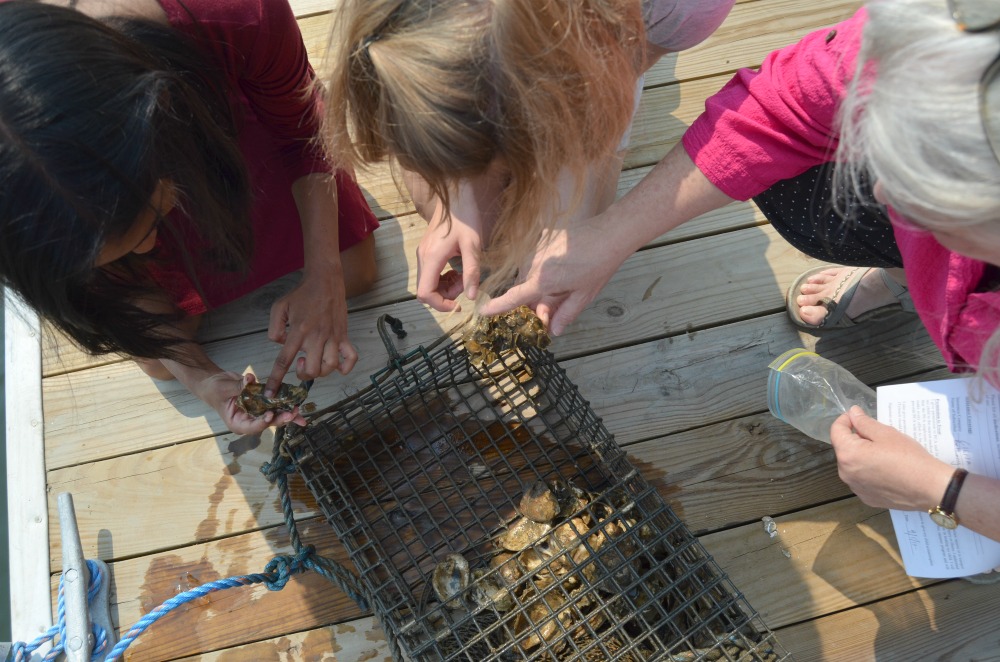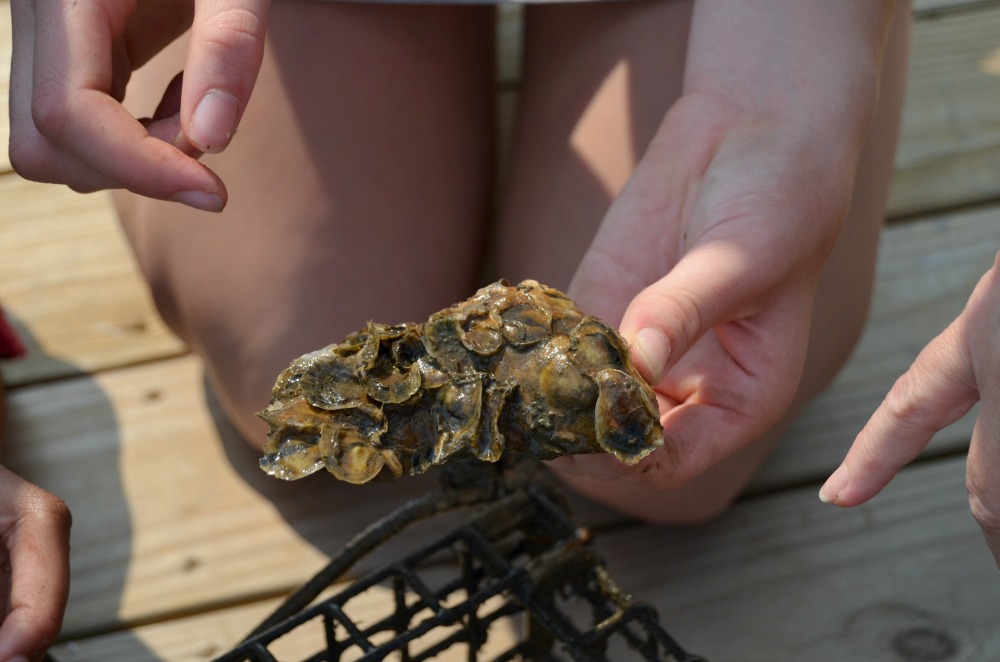Portsmouth Christian Academy Freshmen Science Project Aids Oyster Reef Redevelopment in Great Bay

Lily Kjendal and Bethany Koshy, both freshmen at PCA, began an exciting project this summer on the dock at PCA along the Bellamy River, and Lily’s home dock on Little Bay.They are participating in a study to re-develop the degraded Oyster Reefs in the Piscataqua Region Estuary of NH and ME through the Oyster Project of The Nature Conservancy of Great Bay partnered with UNH.

Eastern Oysters play a role in filtering water and are an important part of the ecosystem of Great Bay. They have declined in the past years due to harvest, pollution and disease. Learn more about oyster restoration efforts in New Hampshire’s Great Bay and the Gulf of Maine.
Lily and Bethany are measuring the growth of the oysters as part of the Oyster Project and keeping the cages clean and free of predators like sea squirts, green crabs, oyster drills, orange and red tunicate to name a few. They are also charting water and air temperatures, pH, salinity, oxygen levels and depth of the water in tidal estuary where the oysters are kept. The oysters will be raised in their cages this summer through early fall, and then released to a reef in Great Bay by the Isle of Shoals. Lily and Bethany are part of approximately 100 volunteers raising oysters along the Great Bay area to participate in this project. The data will be collected by the Nature Conservancy to help them learn where the oysters grow best and if there are any oyster larvae in the waters which are naturally growing. This project has restored up to 5 acres and 1 M oysters annually.
The introduction of restorative measures on the Bellamy River and within Great Bay is one of the main components of PCA’s Environmental Stewardship Pilot Program. The current project that Lily and Bethany are working into their freshman year science fair project, comparing the development of the 2 cages of oyster spat to see if having the oyster spat continually submersed in coastal waters aids the growth of the spat versus raising them on a tidal mud flat as well as studying other environmental differences, is just the beginning.




